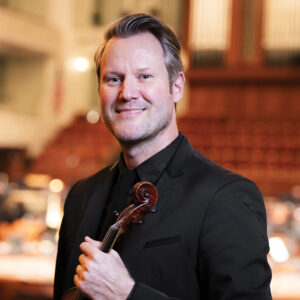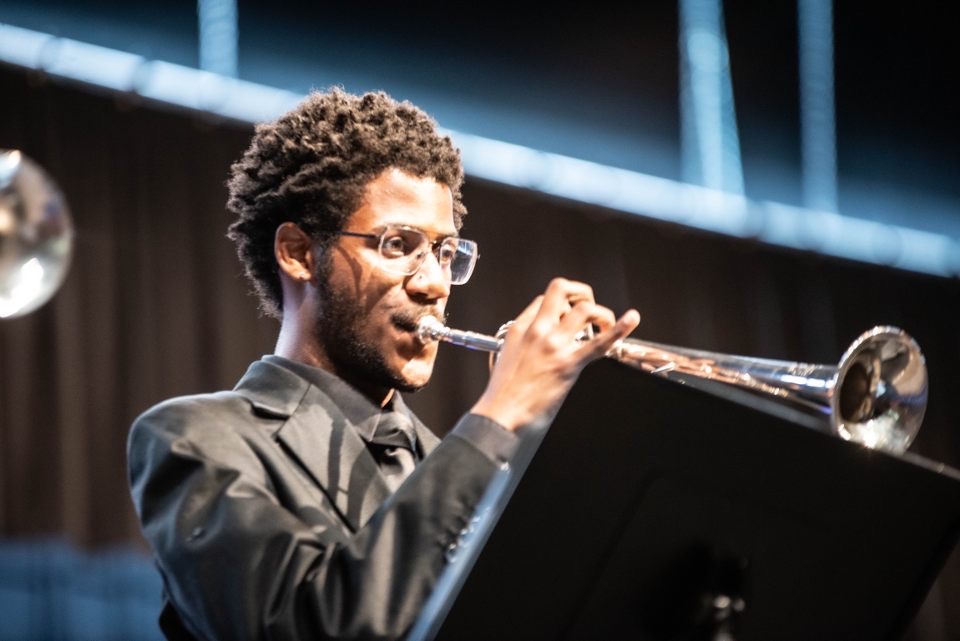A Night with the Nashville Symphony:
The Premiere of Winger’s Violin Concerto and the Music Barber and Copland
Versión en español aqui
This past weekend was an exciting time for new music in Nashville, with the Nashville Symphony’s premiere of C.F. Kip Winger’s Violin Concerto: In the Language of Flowers, during their Barber, Winger, and Copland concert. It was an entertaining performance that featured Samuel Barber’s Overture to The School for Scandal, as well as Aaron Copland’s Symphony No. 3, and concertmaster Peter Otto as violin soloist. This program was a great selection that played to music director Giancarlo Guerrero’s ability to evoke a wide range of emotions and characters from the orchestra.
The evening began with Barber’s Overture to The School for Scandal, a playful and harmonically broad work that the composer wrote at just 21 years old, as his first orchestral composition. Though composed years before his well-known Adagio for Strings, this piece is full of lyrical charm and rhythmic energy, not only representative of Barber’s style, but of Richard Brinsley Sheridan’s 1777 comedic play which inspired it. The orchestra’s strings and woodwinds bring the work’s melodic developments, like in the moments of solo oboe or accompanied clarinet, played wonderfully by principal oboist Titus Underwood and principal clarinetist Danny Goldman, respectively.

The most anticipated work on the program, the world premiere of Winger’s Violin Concerto followed, and I cannot begin to describe how anxiously I await the live recording – this piece (and its performance) was wonderful. The composer’s varied background is clearly reflected in the work. His early life was shaped by jazz and years studying dance with a ballet company, until he eventually ventured into rock with his own band, Winger, and collaborations with acts such as Alice Cooper. In 2017, the Nashville Symphony performed Winger’s ballet score Conversations with Nijinsky. Upon the positive reception of this performance, Guerrero invited Winger to write a symphony and concerto. In 2022, the Nashville Symphony premiered Winger’s Symphony No. 1, which the composer described himself as an autobiographical work “centered around the theme of atonement.” Though he began writing his violin concerto in 2019, it is not until the years following his concerto that he would complete most of the work, with the help of Peter Otto, the current concertmaster of the Nashville Symphony.
The first movement, titled “Forsythia,” opens with a violin cadenza, in which all the concerto’s four main themes are presented. Here, Otto suggests only a small sample of the virtuosic writing (and playing) that is to come with phrases of chromatic runs and arpeggios. Written in 7/8 time signature, Winger employs polyrhythm to build synergy between the soloist and orchestra. The second movement, “Viscaria,” is where the violin truly takes the front stage. In a rapid fashion, the violin often interrupts the orchestra with extravagant and rhythmically dense statements, like what one may find in a rock guitar solo. Otto takes full advantage of the writing, giving the audience no time to process the technical accuracy and prowise of his playing. This continues into the third movement, “Ambrosia.” Otto delights the audience with gentle lyrical playing of a subject which Winger himself considers his “all-time best melody.” Passionate, yet apprehensive, Shostakovich’s influence is particularly evident, here. The final movement, “Wisteria,” is the proper conclusion to a work so conflicted, full of contrast and skill. Otto’s attention to detail and care for subtly is on full display, here, and it is made clear that this piece was written with him in mind.
The program concluded with Copland’s Symphony No. 3. This was my first time listening to any of Copland’s symphonic works in-person, and it did not disappoint. The first movement opens with Copland’s signature Western sound, which he creates using widely spaced intervals and open textures of woodwinds, strings, and horns. The main theme is presented like a hymn, then quickly develops into a rhythmically driven and densely textured middle section. The orchestra has the keen ability to shift mood rapidly, making full textures appear, seemingly, out of nowhere and with ease. The second movement is a scherzo and is our first introduction to the Fanfare for the Common Man material that becomes increasingly present throughout the rest of the symphony. The dramatic nature of this movement lends itself to the orchestra’s brass sections, all capable of capturing a wide range of emotions. The trumpet section, led by principal William Leathers, especially realized Copland’s explosive and colorful writing, here. The third movement is slow and haunting. Its lyrical theme is reminiscent of the first movement, with brighter textures, though maintains a coldness throughout. The final movement immediately follows, with no pause. Here, the fanfare material from Fanfare for the Common Man reaches its peak, growing from the flutes then to the brass for an epic climax. Throughout the movement, the music breaks itself down then rebuilds, with not only a fanfare theme, but a 7/8 theme as well, clearly influenced by Latin-American rhythms. The orchestra truly shines at the climax of the movement, in the powerful return of the fanfare theme.
On the weekend of May 25th, Guerrero will conduct his final program as Music Director of the Nashville Symphony, titled “Guerrero’s Finale: Mahler’s Symphony of a Thousand.” The symphony will be performing Gustav Mahler’s colossal Symphony No. 8 (“Symphony of a Thousand”). It is sure to be an incredible experience and a fitting conclusion to Guerrero’s 16-year tenure with the Nashville Symphony.



